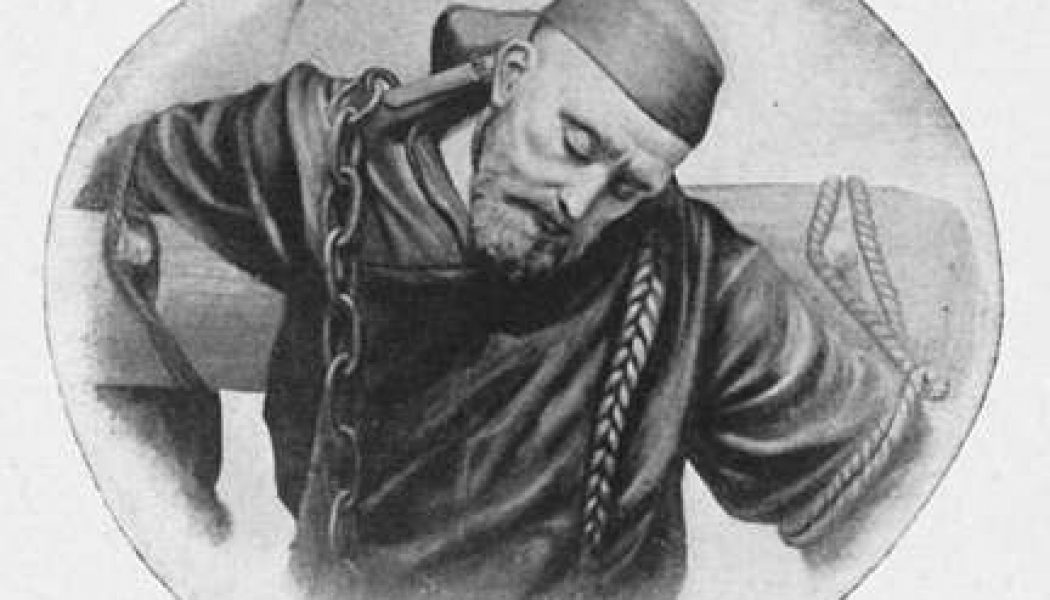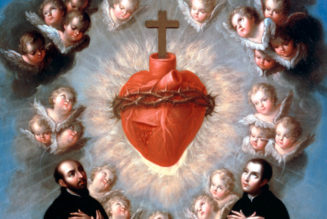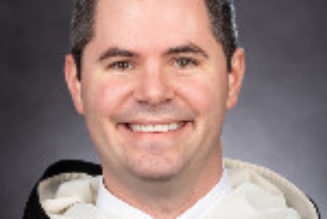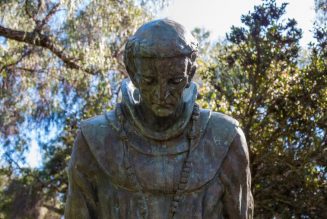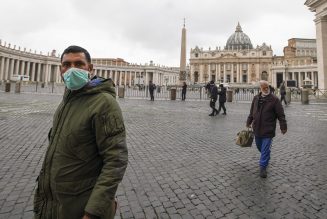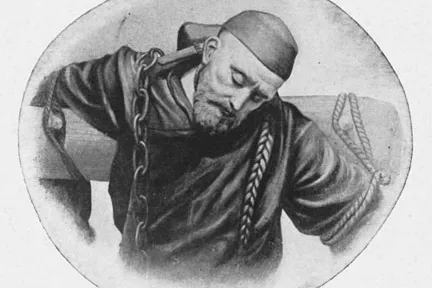
.- China’s first canonized saint was martyred by suffocation on a cross in Wuhan, the epicenter of today’s coronavirus pandemic.
St. Jean-Gabriel Perboyre, a Vincentian missionary priest from France, was betrayed by one of his catechumens for money, bound in chains, tortured, tied to a wooden cross and strangled to death in Wuhan in 1840.
Dr. Anthony Clark, a professor of Chinese history, spent time in Wuhan researching the life of Perboyre and St. Francis Regis Clet, another 19th-century Vincentian priest martyred in Wuhan.
Clark told CNA that Wuhan’s martyr saints are particularly suitable intercessors for those suffering from COVID-19 today.
“Sts. Perboyre and Clet were both killed by strangulation; they died because they could not breathe,” he said. “How could they not be appropriate intercessors for this particular illness?”
“Among the torments against Perboyre were continued beatings on his lower back and he was forced to kneel on broken glass. He certainly knew the agonies of physical suffering, and would be a good comfort for those who now suffer from this virus.”
Wuhan, now infamous as the origin of the coronavirus, was once an outpost for Catholic missionaries who founded Catholic hospitals in the city.
Outside of Wuhan Central Hospital, where coronavirus whistleblower Dr. Li Wenliang died, is a statue of Italian missionary, Msgr. Eustachius Zanoli, photographed by New York Times correspondent, Chris Buckley.
The plaque beneath the bust reads in Chinese and English: “Monsignor Eustachius Zanoli, from Italy, was the first Bishop of Roman Catholic Church in Eastern Hubei. In 1886 he invited the Canossian Daughters of Charity to Wuhan to provide social service and in 1880 established the Hankou Catholic Hospital, which laid the foundation for the development of the Wuhan No. 2 Hospital (1955) and subsequently the Central Hospital of Wuhan (1999).”
Another nearby coronavirus facility, Wuhan Jinyintan Hospital, can trace its roots back to an infectious diseases hospital founded by Franciscan missionaries in 1926, the Father Mei Memorial Catholic Hospital of Hankou.
It was named for Fr. Pascal Angelicus Melotto (1864-1923), a Franciscan missionary friar from Italy martyred in Wuhan, who took Fr. Mei Zhanchun as his Chinese name. He was kidnapped for ransom and then shot in the stomach with a poisoned bullet in 1923.
“I am happy to die for the Chinese,” the missionary priest said at his death, according to the Franciscan Order’s website. “I lived in China for the Chinese and now I am happy to die for them.”
The Father Mei Memorial Catholic Hospital of Hankou was staffed by Franciscan Sisters of Christian Doctrine until missionaries were expelled from China in 1952 after the Chinese Communist Revolution.
“The Catholic community of Wuhan has suffered greatly during the era of Chairman Mao and the Cultural Revolution, and through that time they hid the tombstones of Saints Perboyre and Clet to protect them, because of their deep devotion to those martyrs,” Clark said.
“While I was there I visited the seminary where the two tombstones are now displayed for veneration; the Catholics of Wuhan have a great devotion to the Eucharist and to the Vincentians, such as Perboyre and Clet, who died for them, and shed their blood on the soil of that city,” he added.
Many missionaries left for China in the 19th century with the knowledge that they would never return.
“I don’t know what awaits me on the path that opens before me: without a doubt the cross, which is the daily bread of the missionary. What can we hope for better, going to preach a crucified God?” St. Perboyre wrote in a letter during his journey to China.
Perboyre’s remains were eventually moved to Paris to the Vincentian motherhouse. Today his tomb is located in a side chapel in the same church where St. Vincent de Paul’s incorrupt body is located. He was beatified in 1889 by Pope Leo XIII.
“St. Thérèse of Lisieux had a special devotion to Perboyre and kept a holy card dedicated to him in her personal prayerbook,” Dr. Clark pointed out.
At Perboyre’s canonization in 1996, St. John Paul II said: “Along the streets where he had been sent he found the Cross of Christ. Through the daily imitation of his Lord, with humility and gentleness, he fully identified with him. … After being tortured and condemned, reproducing the Passion of Jesus with extraordinary similarity, he came like him to death and death on a cross.”
St. John Paul II canonized St. Francis Regis Clet in October 2000, along with 33 other missionaries and 87 Chinese Catholics martyred under the Qing Dynasty (1644-1911).
Michael Fu Tieshan, a bishop of China’s state-run church, the Chinese Patriotic Catholic Association, called the canonization a “public humiliation” in an interview with state-run television, AP reported at the time.
The first “patriotic bishop” named by the Communist government in China in 1958 was from Wuhan. Dong Guangqing, who died in 2007, was president of Patriotic Catholic Association of Wuhan and vice president of the National Administrative Committee of the Chinese Catholic Church.
Today, Catholics in Wuhan have a particular devotion to St. Francis and the Sacrament of Penance, Clark observed.
Catholics in Wuhan are “known to make long lines near the confessionals of priests who are most faithful to the authentic teachings of the Church; they are a beautiful witness,” he said.
“It is rare to find a church without a statue of St. Francis, and sometimes a devotion to St. Vincent de Paul. The faith there is strong, and has even flourished especially during times of persecution,” Clark added.
“I have indeed heard from some Catholics during this time, and they are, like all of us, turning to the Lord and his mercy as we all confront our own frailty,” he said. “I recently heard from a Wuhan Protestant who remarked on the sadness of witnessing elderly members of their church passing away. The trauma within Wuhan’s Christian community has been greatly aided through the powerful faith of Christians in that area.”
